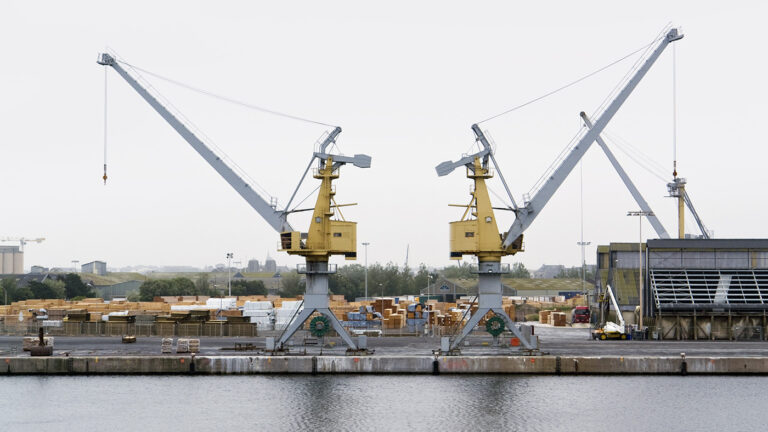It’s a useful lesson. Too many capital investments and improvement activities, while promising dramatic productivity improvements and hundreds of thousands of dollars in cost savings, fail to make more of “that stuff called profit.”
There are four main reasons why promised financial gains fail to drop to the bottom line.
- Lack of Sustainment. The performance gains are not sustained long enough to realize the financial benefits. (This is why we always work with clients to establish a proactive daily management system that will improve sustainment.)
- Islands of Excellence. Optimizing one process or functional area – creating so-called “islands of excellence” – does not have much impact on enterprise-wide performance or profits. Optimizing performance in one area can undermine performance in other areas. This is even more likely when metrics and incentives reward optimization at the functional level.
- Misleading Cost Categorization. For example, costs that are fixed, variable, semi-variable, etc. may not always be treated as such during decision making processes or optimizations.
- Uninformed Decision Making. For everyday decisions managers use average vs. marginal costs, not knowing the actual profit contribution of producing one more unit of a certain product.
A classic example of such tradeoffs is the push to maximize production output and asset utilization without really understanding if it’s worth it to A) run a machine with overtime labor, or B) produce more or less of a certain product type or configuration. This can create inventory headaches – having too much of what customers don’t want, and not enough of what they do want – and reduce cash flow.
Manufacturing leaders need better ways of seeing where investments and process improvement efforts would have the biggest, most immediate impact on the company’s financial performance.
From a solutions perspective, the challenge has always been that there are too many variables and not enough data to balance the process and functional tradeoffs for both short- and long-range decisions. Prescriptive analytics models, combined with today’s more available and better quality data, can provide that visibility. These solutions are already helping manufacturing business leaders and managers make decisions that optimize performance and profits — not just within their functional areas, but across their companies.
What Is Prescriptive Analytics?
In our previous blog post on the topic of prescriptive analytics, we explained what prescriptive analytics is, why potential applications for manufacturers are expanding, and some of the challenges that these solutions can help solve, specifically as it pertains to supply chain management. In this post, we’re going to explore these challenges in more depth, and go into some more detail with a case study from River Logic, one of our new solutions partners.*
To reiterate,
- Descriptive analytics summarizes what has happened and what is happening in a business. Management dashboards are one such example; they provide an overview of historic and real-time activity, including preset alerts when specified metrics near critical limits.
- Predictive analytics uses historic data to give managers probabilities about what could happen in the future, given what has happened in the past.
- Prescriptive analytics takes this one step further, telling decision makers what to do in a given situation (the best path forward) and what impact each decision option will have on pre-defined KPIs. Where to assign orders or to allocate investment dollars, for example, and how much.
Prescriptive analytics models can be used to make long-term decisions, such as capacity planning related to capital expenditures or long-term risk management. Medium-term models can optimize inventory, distribution and production strategies. And day-to-day models can help set production sequences and shift schedules, as well as material handling and truck-loading patterns.
Case Study: Utility Pole Maker Uses Prescriptive Analytics to Improve Profits
Here’s an example of the profit-enhancing opportunities of prescription analytics. Based in Orangeburg, South Carolina, Cox Industries has 15 manufacturing facilities in eight states. The company employs some 400 people who make wood utility poles and marine construction products.
Cox uses prescriptive analytics for end-to-end planning in procurement, sourcing, demand management, inventory management and logistics. The analytical model they’ve created not only has drastically improved the company’s financial planning and forecasting processes, it’s helped them understand how to better run their operations to meet their financial goals. Better visibility into what’s happening and what could happen to demand has helped the organization prepare for and respond quickly to both regulatory and market changes.
Cox also uses prescriptive analytics to evaluate customer bids and capital investment decisions. For example, the company always did some log-peeling in house, roughly 25% of the logs it needed. It purchased its remaining requirements from outside vendors. Prescriptive analytics (specifically, optimization in the form of linear programming) revealed that the company could peel some profiles much cheaper than their outside vendors. Today, the company peels over 80% of its volume needs in house, a switch that increased the profitability of this one business unit by over 3% of their annual revenue. Additionally, Cox was able to institutionalize these decision-support practices while increasing cross-functional collaboration, agility and predictability.
In summary, Cox used prescriptive analytics to support an integrated planning process that brought them:
- Optimal production allocation (the former S&OP process assigned all production volume to the selling location)
- Customer bid support (shift from a cost-plus to marginal profitability approach)
- Demand shaping (users specify percent range of demand fluctuation by price to optimize sales volume)
Production allocation, customer bid support and demand shaping are just a few things that can be drastically improved through the application of prescriptive analytics. Finding answers to questions around cross-functional tradeoffs are the conversations that manufacturing leaders should be having. That’s how you can make more of “that stuff called profit.”
* This blog post was a collaboration with TBM Consulting, a new solutions partner of River Logic. The blog article was written by Ken Koenemann, Vice President, Technology and Supply Chain at TBM Consulting and Nathan Goldstein, Vice President of Partners at River Logic. Click below to request the full-length version of the case study.



